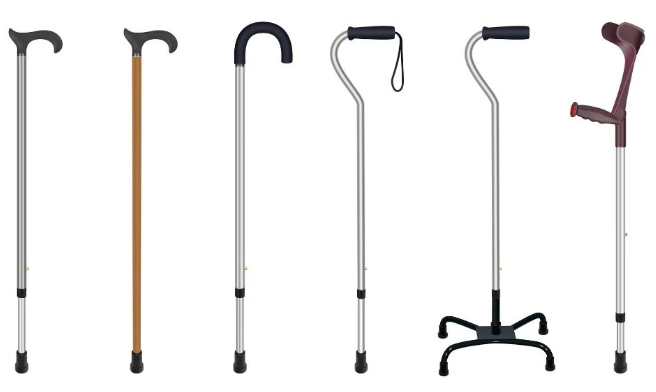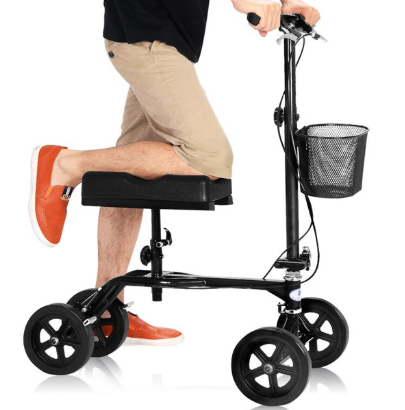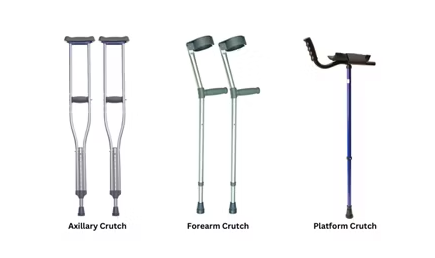What Is The Best Walking Aid for Elderly
Choosing the right walking aid for elderly is important.What is the best walking aid for elderly? I believe it should match their specific needs. We should consider how much support they need. We also need to think about their independence and safety.
Modern Features and Adjustability
Many walking aids today have helpful features. I like these:
– Adjustable height. This makes them more comfortable.
– Lighter materials. This makes them easier to handle.
– Improved safety. Look for better hand grips and brakes or locks.
– Options to suit different homes and activities.
From my perspective, the most suitable walking aid for elderly must fit their personal situation. I believe this is key for their safety. It also helps them stay independent.
1. Canes
Canes are common walking aids I often see older adults use. I find they help improve balance and movement. They also help prevent falls. This is helpful for people who feel a bit unsteady or have some weakness in their legs.
Main Cane Types I See Seniors Use
| Cane Type | Details |
|---|---|
| Standard Canes | These canes have one tip and are light.
Easy to handle, good for slight balance issues or mild leg weakness. Support up to 300 lbs. Most models adjust in height (usually between 30 and 38 inches). |
| Quad Canes | Have a four-point base for extra stability, offering much more support.
Recommended for significant balance problems or stroke recovery. Heavier, up to double the weight of standard canes. Correct walking technique is important to ensure safety. Weight limits between 220 and 350 lbs. Available with either narrow or wide bases for different stability needs. |
| Offset Canes | Feature a curved, offset handle.
Design shifts body weight closer to the cane’s main part for better weight distribution. Helpful for individuals with arthritis or hand pain. Handle shapes fit the hand well, spreading weight better and providing comfort. |
| Folding Canes | Can fold, making them compact for storage and travel.
Might feel less sturdy than non-folding canes. Recommended for occasional support; easy to carry around. Average folded length is 10-15 inches. Can support up to 250 lbs. |
Choosing the Best Cane
– I suggest you think about how much help with balance you need. Also, consider your hand strength and where you’ll use the cane each day.
– Think about adjustability, grip comfort, and weight limits. In my view, these factors are important.
– Newer canes often have comfortable handles. They might use lighter materials or have unique designs.
– Canes help you walk, but I think they can also show off your personal style.
I believe canes are useful tools that you can adapt to your needs. They provide support and help seniors stay independent, even if moving around is difficult.
2. Walkers
Walkers are very popular walking aids(one of walking aid for elderly). I find they work well for older adults who have trouble moving around. They offer good safety, stability, and support. You can find several types of walkers. Each type meets different needs.
Types of Walkers for Mobility Support
Standard Walker
It has a strong metal frame. It includes four legs with non-skid rubber tips.
You have to lift this walker with every step. I think this makes it best if you need to put a lot of weight on it.
It works well indoors and for short walks. I recommend it for people healing from leg or hip surgery or injury.
Supports up to 400 pounds.
It’s light and folds up. However, lifting it all the time might make you tired.
Two-Wheeled (Rolling) Walker
This is like a standard walker, but it has two wheels on the front.
It’s easier to move. You don’t need to lift it fully off the ground.
I suggest this type if you need medium support. It’s also good if lifting a walker is hard for you.
The front wheels and fixed back legs help it move smoothly.
It suits people who still have some arm strength.
Four-Wheeled Walker (Rollator)
This type has four wheels and hand brakes. It also includes a seat. Many models have a basket for carrying things.
I recommend this if you need help with balance but not full weight support. The seat is great if you need to rest during walks.
It moves easily and can go faster. But, in my experience, you need good strength and balance to use it safely.
Standard models support 250–350 pounds. Bariatric rollators support up to 600–1000 pounds.
It’s often bigger than other walkers.
Three-Wheeled Walker
It has one front wheel and two back wheels. This gives it a triangle shape.
It moves easily and is light and small. I find it’s great for getting around in tight spots.
It’s not as stable as standard or two-wheeled walkers.
Some models help you walk more upright. However, they don’t support as much weight.
Knee Walker
This isn’t a typical walker. It’s a special device I recommend if you can’t put weight on one leg.
It has a padded platform for your knee and handlebars. It lets you move around easily. I see it as a good option instead of crutches.
3. Rollators
I find rollators are great walking aid for elderly. This kind of walking aid for elderly help older people with balance when moving. You don’t need them to support your full weight, though. I think they are popular because they help people stay independent and safe in their everyday activities.
Key Features and Benefits of Rollators
Easy Movement: I notice rollators have four wheels. Two are fixed in back, and two swivel up front. This lets them move smoothly on different surfaces. They work well inside and outside. I recommend them for older users who need to get around on changing ground.
Safe Hand Brakes: All rollators have easy-to-use hand brakes. These brakes give you better control when walking, which makes using the rollator safer in my opinion. They also have parking brakes. I find these helpful for extra steadiness if you need to sit or stop for a moment.
Adjustable for Comfort: The handle height can be adjusted to suit different users. I believe this helps you keep good posture. It also makes using the rollator more comfortable.
Built-in Seat and Rest Support: Many rollators offer a padded seat and backrest. This feature is great. It lets users who tire quickly rest when they need to. This includes people with conditions like heart failure or chronic obstructive pulmonary disease (COPD). I think it’s very helpful during longer trips out.
Convenient Storage: Rollators often include storage baskets or pouches. I find these are perfect for carrying your things. You can put shopping or needed medical items in them. This makes trips and errands simpler for older adults.
Simple Transport: You can fold most rollator frames. Based on my experience, this makes them easy to take when traveling or store in tight spots.
Overall, I think rollators are a useful choice. They help older people balance support and movement during their everyday tasks.
4. Crutches
Crutches are one of walking aid for elderly,they often use after an injury or surgery. They provide temporary support. In my experience, doctors recommend them less often as a long-term walking aid for older adults. This is because of how they are designed and the strength needed to use them.
Types of Crutches for Older Adults: Features & Suitability
| Type | Typical Use Case | Advantages | Disadvantages | Good Choice for Older Adults? |
|---|---|---|---|---|
| Underarm (Axilla) | Short-term, non-weight bearing | Simple to use, easy to find | Causes armpit discomfort, less stable | Not often, and just for short periods |
| Forearm (Elbow/Lofstrand) | Long-term, partial weight bearing | Allows more movement freedom, keeps hands free | Needs strong arms and grip | For select, strong older adults |
| Platform (Gutter) | Weak grip, severe arthritis | Supports forearm/wrist, needs less grip strength | Bulky, harder to move around with | Useful if grip is very weak |
Underarm crutches: People use these often for short times after an injury. They are easy to find and use. I find they can make armpits sore and are not very stable. I think they are not a good fit for older adults, except maybe for very short-term use.
Forearm (elbow/lofstrand) crutches: These let you move around more easily and keep your hands freer. Using them requires strong arms and a good grip. I believe they are suitable just for certain older adults who are quite strong and agile.
Platform (gutter) crutches: These are made for people with a weak grip or bad arthritis. They support the forearm and wrist, so less grip strength is needed. They are large and can be difficult to handle. This restricts their use, but I see they can help older adults who have very weak hands.
Limitations and Considerations for Older Users
Using crutches demands good upper body strength, coordination, and balance. I know this can be hard for many older adults.
There is a greater risk of falls or other injuries if someone uses them the wrong way.
For safety, I strongly recommend a professional evaluation and getting the crutches fitted properly.
Conclusion: Are Crutches a Good Walking Aid for Older Adults?
Crutches are necessary for short-term support after an injury or operation. I feel they are usually not the best pick for older adults needing long-term help with walking. To use them safely, choose the right type, make sure they fit well, and use them with professional advice.
Summary
I have looked at many walking aids. From my experience, the best choice really depends on what each person needs.
I see different needs met by different aids:
- For minor balance issues, I often suggest a cane.
- If someone needs more steadiness, a walker is a good option in my opinion.
- A rollator helps you walk and offers a place to sit and rest, which I find very practical.
- Crutches are usually for short-term problems, like after an injury.
In my view, the goal is always to pick the walking aid for elderly that helps you stay safe and do things for yourself. I strongly recommend talking with a doctor or therapist first. They can help you decide.
For me, the most important point is choosing help that improves daily life. I believe the right walking aid lets seniors keep doing the activities they love and stay involved.





